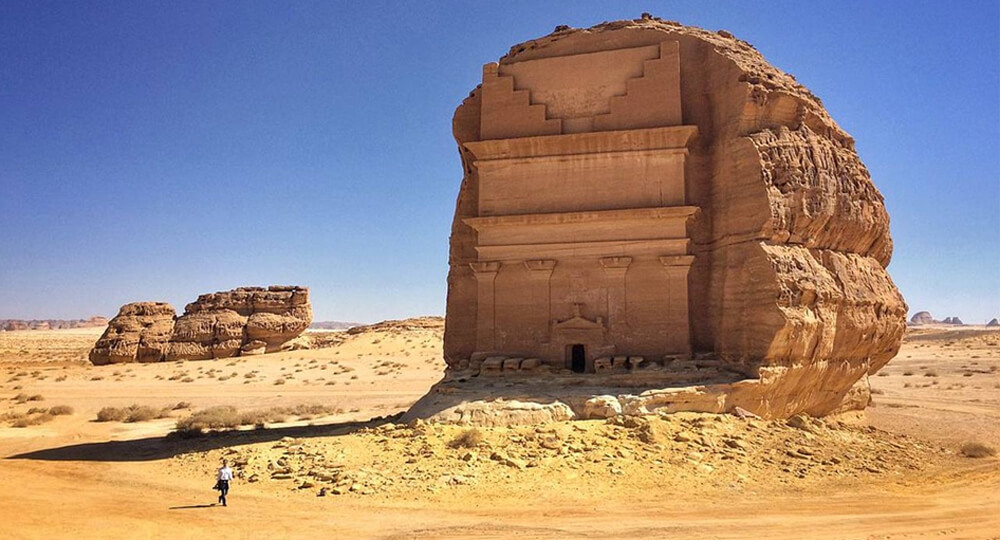
Because of its location, which allowed it to control the Incense Route that went through the Arabian Peninsula, the Nabataean Kingdom ruled over a vast territory that stretched from the southern Levant to northern Arabia. Due to this profitable trade, the Nabataeans became extremely powerful and wealthy. The monuments they erected are one example of how wealthy they were. The al-Khazneh in Petra, Jordan, is arguably the most famous Nabataean monument. That being said, there are many examples of the Nabataeans’ exceptional rock-carving skills found all over their kingdom. The Qasr al-Farid is one such monument.
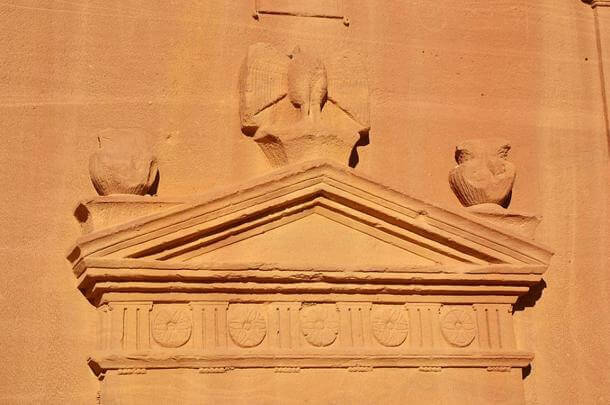
The Qasr al-Farid, also referred to as the “Lonely Castle,” is situated in the northern Saudi Arabian region of Madâin Sâlih, an archaeological site also called al-Hijr or Hegra. The Qasr al-Farid, despite being called a castle, was actually a tomb built in the first century AD. The Madâin Sâlih is home to 111 massive tombs, of which the Qasr al-Farid is just one. The site was designated a World Heritage site by UNESCO in 2008.
Ninety-four of these tombs have decorations. Because of its complete isolation from the other tombs in the vicinity, the Qasr al-Farid is regarded as one of the most well-known tombs in Madâin Sâlih. Considering that the majority of the massive tombs in Madâin Sâlih were discovered to have been constructed in groups, this is unusual. These consist of the tombs of Qasr al-Bint, Qasr al-Sani, and the Jabal al-Mahjar region.
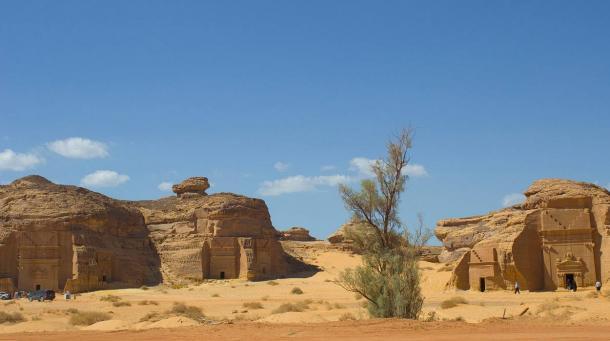
It is said that the Qasr al-Farid is four stories tall. Larger monuments were unquestionably better because they were intended to serve as a symbol of the social standing and wealth of the individuals who commissioned them. The quantity of pilasters on the façade of the Qasr al-Farid is another remarkable feature. There are just two pilasters on each of the other Madâin Sâlih tomb façades: one on the left and one on the right. On the other hand, the façade of the Qasr al-Farid is supported by four pilasters—two in the center and one on each side. This could provide more proof that the occupant of the tomb was a very powerful and affluent person in Nabataean society.
The mysterious Nabataeans were formerly a nomadic tribe, but some 2,500 years ago they started constructing large towns and cities, which flourished from the first century BC to the first century AD. One such city is the stunning city of Petra in Jordan. Along with their agricultural endeavors, they also created political structures, works of art, engineering, astronomy, stonemasonry, and an incredible level of hydraulic proficiency through the building of cisterns, aqueducts, and wells.
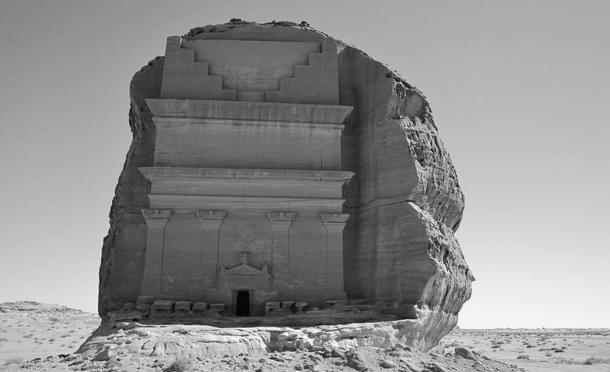
The fact that the construction of the Qasr al-Farid was never finished may therefore come as a surprise. It is, regrettably, very unlikely that we will ever learn who this tomb was constructed for. We will also not be aware of the reason behind the workers’ and project owner’s departure. However, the incompleteness of the Qasr al-Farid reveals something intriguing about its construction. It has been proposed that the monument was fashioned from the top down because the lower portion of the tomb’s façade has rougher quality work. It’s also possible that other monuments with comparable features were created in a similar way.
Related Topic You Might Find Interesting:
- The unbroken seal on King Tutankhamun’s tomb until 1922
- Ancient Egyptians Had Pregnancy Tests Over 3500 Years Ago
- Top 10 mysterious and least explored places on Earth
- Famous abandoned cities and ghost towns in the world
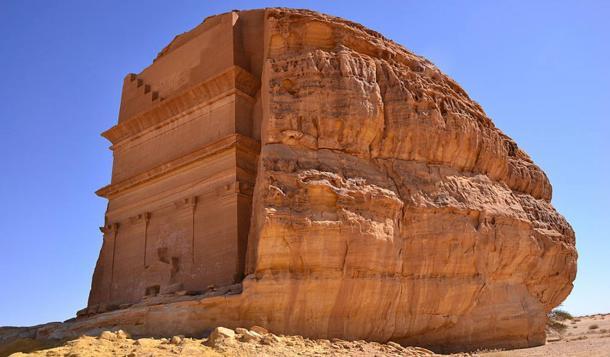
The Incense Route was in decline by the third century A.D. as a result of the Roman Empire’s political and economic problems. The decline in trade would therefore have an impact on a large number of the towns along the trade route. Not even Medain Salih, which had been a significant staging area on the main caravan route running north-south, was spared, eventually becoming little more than a village. For example, the Arab traveler from the tenth century described Madâin Sâlih as little more than a tiny oasis where the locals’ lives revolved around their wells and peasants.
This is undeniably a stark contrast compared to the site’s heyday during the Nabataean period, when merchants and camels laden with the incense of Arabia would have thronged its streets on their way to the north. Still, the Qasr al-Farid and the other tombs built by the Nabataeans remain as a testimony to the greatness that the Madâin Sâlih once was.

Death Valley’s sailing stones mystery SOLVED
The mysterious "sailing stones" of Death Valley have confused experts for years. The massive stones appear to travel over the dried lake bed known as Racetrack Playa in California's Death Valley National Park, leaving a path in the cracked mud behind them.

Inside The Mysterious Death Of The Famed Gothic Writer Edgar Allan Poe
Hours before his death Edgar Allen Poe was found on the streets of Baltimore. He was incoherent, wearing another man’s clothes, and unable to explain how he got there. The cause of his death is an unsolved mystery.

Poland's Krzywy: The Mysteries of the Crooked trees
In Poland, there is a forest with 400 crooked trees that have a 90-degree bend at the base of their trunks. Despite of numerous possibilities, the real reason and how it evolved remain a mystery.

[solved] “macaroni mystery”, 500 pounds of pasta dumped in new jersey
In April 2023, Old Bridge, New Jersey, faced a peculiar 'Macaroni Mystery' when 500 pounds of pasta were mysteriously dumped in the woods.

What is secret behind the Australia’s mysterious pink lake?
Lake Hillier in Australia maintains a bright pink hue all year round. Although no one knows for sure what causes the unique coloring, experts speculate that it might be the result of high salinity, a pink bacteria called “halobacteria,” and a salt-loving algae species called Dunaliella salina.

Jason Padgett: Became a Math genius after head injury in a robbery
Fate has no place in mathematics, yet fate played a role for Jason Padgett and his new fame for being a mathematical genius

The Unsolved mystery of Bobby Dunbar's Disappearance
In 1912, a four-year-old boy named Bobby Dunbar went missing on a family trip, 8 months later he was found and reunited with his family. Nearly a century later, DNA testing of his descendants revealed that the child reunited with the Dunbar family was not Bobby, but rather a boy named Charles (Bruce) Anderson who resembled Bobby.

Thousands of Rare "Ice Eggs" Blanket Finnish Beach in Spectacular Natural Phenomenon
Thousands of ice balls recently covered a beach in Finland, a rare phenomenon caused by wind and waves sculpting pieces of ice into smooth spheres. These "ice eggs" can vary in size from chicken eggs to soccer balls and have also been spotted in other cold regions globally.

The birth or sign language in Nicaragua
When 50 deaf Nicaraguan children who did not know sign language were placed in the same classroom, they created their own sign language. Scientists are still researching the unique spontaneous appearance of language, as well as its own evolution and training of grammar.

The mysterious Pumpkin impaled on the top of Tower
Twenty Three years ago, somebody impaled a 60-pound pumpkin 170 off the ground on this spire at Cornell University. Nobody knows who did this or how they did it.

The Forgotten Story of Marilyn Monroe’s Stolen Dress That Returned Years Later
One of Marilyn Monroe’s most iconic gowns vanished mysteriously, disappearing into the shadows of Hollywood history. This garment, often regarded as a symbol of glamour and tragedy, slipped away for decades before resurfacing under enigmatic circumstances. Whispers of underground auctions, secret collections, and ghostly legends hint at a fascinating and almost cinematic journey for a dress that once captivated a nation. This article uncovers the intriguing saga of Marilyn Monroe’s stolen dress, tracing its path back into the public eye and exploring its lasting cultural significance.

Lightning bolt restores man’s sight and hearing.
In 1980, an old blind and partially deaf man, Edwin Robinson, was struck by lightning. He suffered no injuries, but the impact of the lightning bold cured his vision and hearing.

The mystery of India's 'lake of skeletons'
In 1942, a British forest guard in India made an alarming discovery. Some 16,000 feet above sea level, at the bottom of a small valley, was a frozen lake absolutely full of skeletons.

What Caused The Mysterious Patomskiy Crater in Siberia?
Discovered in 1949, the Patomskiy Crater resembles a huge convex cone with a funnel-shaped recess and a rounded hill in the middle, which looks like an eagle’s nest with an egg nestled inside it. The crater’s origin is a mystery that has baffled scientists for decades.

Mysterious ghost ship found with mummified captain inside [SOLVED]
German captain had been sailing the world for 20 years. It was unknown when or how he died or how long the ghost ship had been adrift

The Heartbreaking Story Of Ella Harper, The ‘Camel Girl’
Ella Harper, Professionally known as the “Camel Girl” was born with a rare orthopedic condition that cased her knee to bend backward. Due to this condition, had to walked on all four legs, which resulted in her nickname as “Camel Girl”. Tough it was hard at first, but soon she made a fortune out of it.

The mysterious secret of Dr James Barry
Before women were allowed to enroll in medical school, Margaret Ann Bulkley studied medicine and assumed the identity of Dr. James Barry for 56 years while dressing as a man. After 46 years of service as an army doctor officer, her secret was not made public until after her death in 1865.

When the Sky Rained Fish: An Unbelievable Encounter Above Alaska
A small Alaskan plane was hit by a fish falling from the sky. It had been dropped by an eagle that misjudged its grip. The plane was unharmed, but it made the news as possibly the weirdest bird strike ever.

Recipient of suicide victim's heart kills himself 12 years later
In 1995, Sonny Graham received a transplanted heart from a suicide victim. He then committed suicide in the very same manner as the donor.

Jimmy Carter Once Promised to Release UFO Files—Here’s Why He Didn’t
During his 1976 presidential campaign, Jimmy Carter declared a bold intention: if elected, he would make all government UFO information available to the public. A man who openly admitted to having seen a UFO himself, Carter embodied a promise of transparency on one of the most controversial subjects of the Cold War era. However, once in office, Carter found powerful obstacles and, citing "national security concerns," chose not to release the files. This article unpacks Carter’s famous guarantee, the political realities he faced, and the enduring mystery surrounding government UFO secrecy.

Chocolate Rain in Switzerland: How a Factory Malfunction Turned Olten Into a Sweet Spectacle
In 2020, chocolate 'rained' from the sky in a town in Switzerland. This incident was caused by a ventilation system malfunction at a chocolate factory in Olten. Strong winds then carried the snow-like cocoa powder and spread it around in the immediate vicinity of the factory, covering cars and other things in chocolate.

Mahabalipuram: The mystery behind Lord Krishna's butterball that defies gravity
Krishna's Butter Ball is a massive rock in Mahabalipuram, Tamilnadu, India, that is perfectly balanced on a slope. An attempt was made in 1908 to remove the rock for fear that it would roll down and destroy nearby homes, but the efforts were wasted.

How Were the Two Parts of the Al Naslaa Rock Formation Created?
Scientists have been puzzled by the Al Naslaa rock formation in Saudi Arabia for a long time, and there is still no explanation for why this boulder appears to have a precise incision across the middle of it.

The story of a boy who claims to be on Mars: Boriska Kipriyanovich
Boriska Kipriyanovich, who lives in Volgograd, Russia, claims he lived on Mars before being resurrected on Earth on a mission to redeem humanity. What we know about him is as follows:

The Remarkable story of jazz bassists Henry Grimes, lost but found as janitor and reclaimed the spotlight
Henry Grimes, one of the most versatile jazz bassists, disappeared in the 1960s and was later presumed dead. However, a jazz-loving social worker found him in 2002 working as a janitor in a hotel. Grimes found his way back into the limelight when a fellow musician sent him a bass as a gift. In 2016, he received a lifetime achievement award.

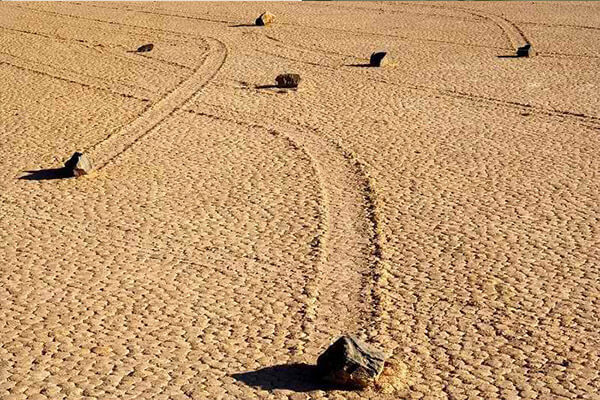
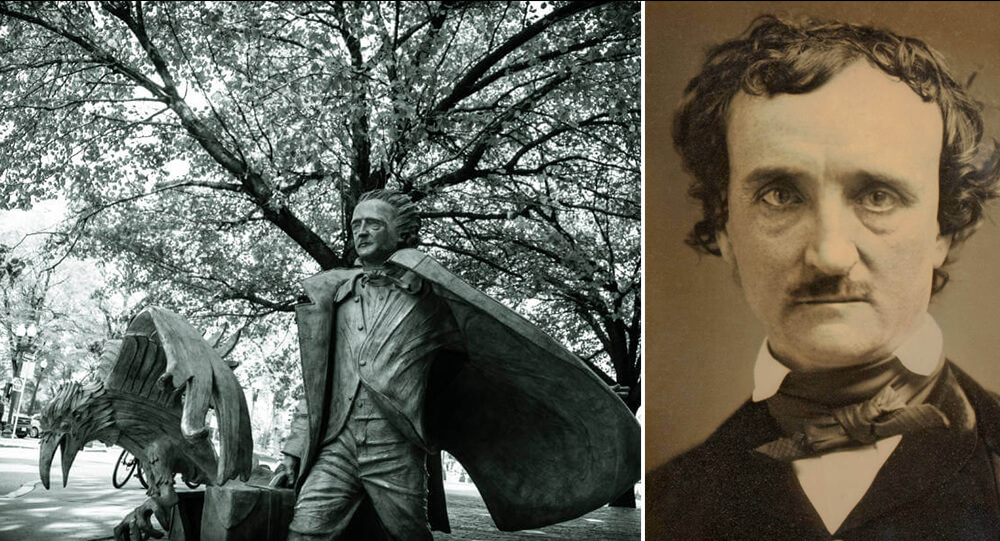

![[solved] “macaroni mystery”, 500 pounds of pasta dumped in new jersey](https://weeklyrecess.com/wp-content/uploads/2024/05/Macaroni-Mystery-cover.jpg)





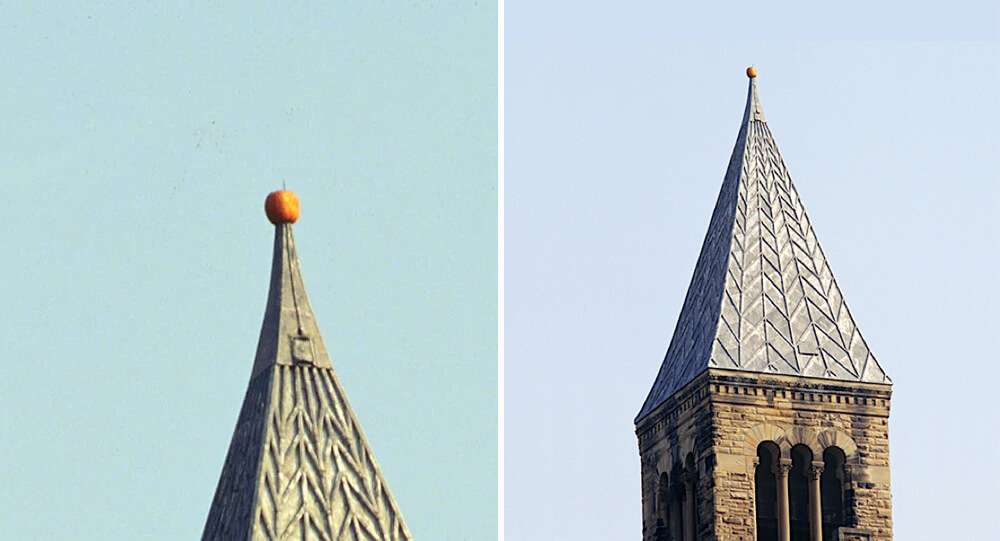


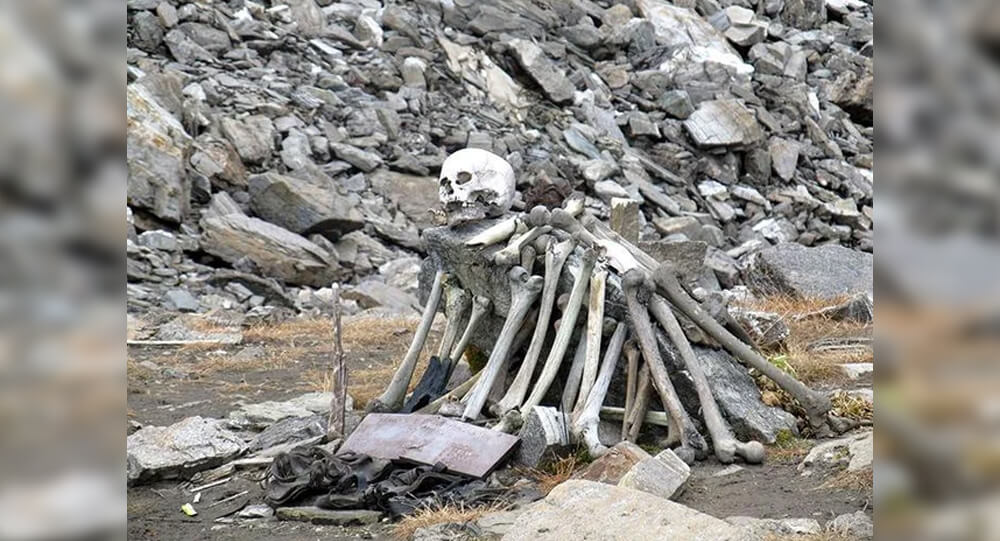

![Mysterious ghost ship found with mummified captain inside [SOLVED]](https://weeklyrecess.com/wp-content/uploads/2024/07/Solved-Mysterious-ghost-ship-with-mummified-captain-cover.jpg)










